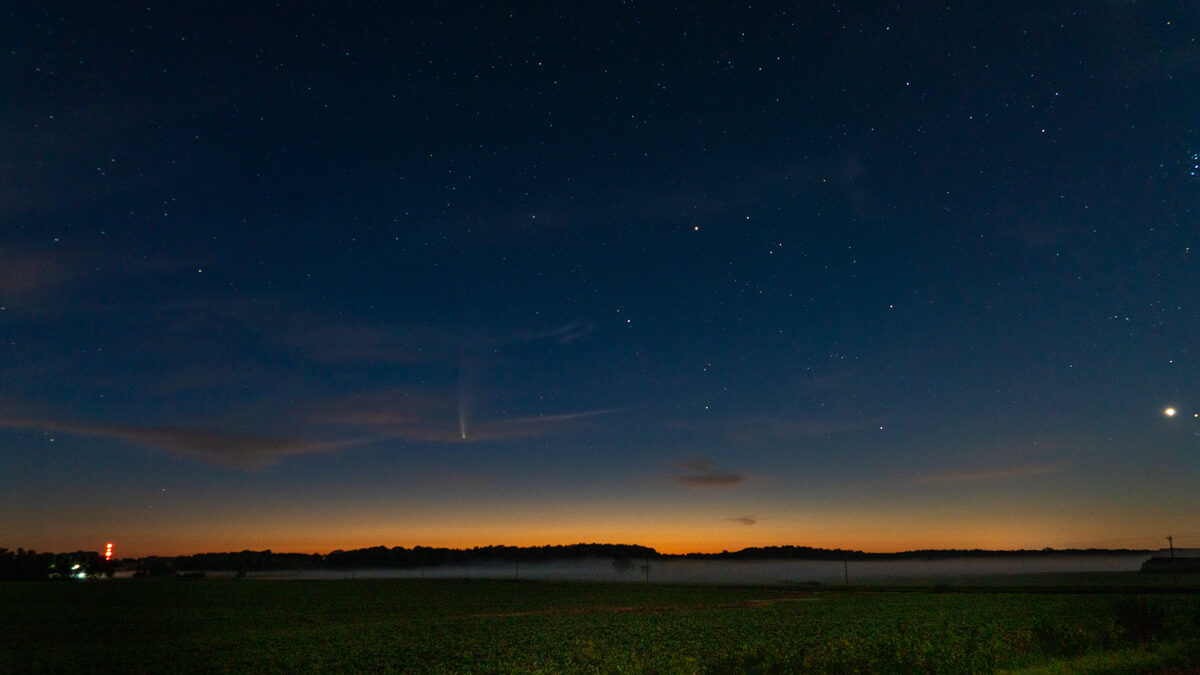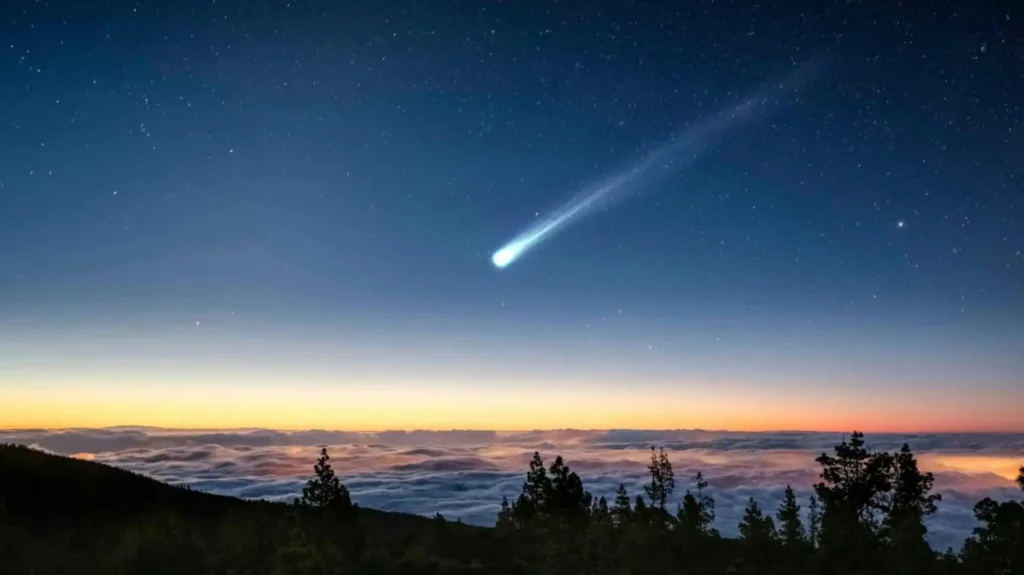
Nearing November perihelion, comet Lemmon (C/2025 A6) may be visible.
The night sky in late 2025 may bring an exciting celestial visitor — Comet Lemmon (C/2025 A6). Discovered earlier this year, the comet is now on its inbound journey toward the Sun, and astronomers predict that it could brighten significantly as it approaches its perihelion (its closest point to the Sun) in November 2025. If all goes well, it might even become visible to the naked eye, offering one of the most memorable skywatching events of the year.
A Discovery from Arizona’s Mount Lemmon Survey
Comet Lemmon was first spotted in early 2025 by astronomers working with the Mount Lemmon Survey in Arizona, part of a program dedicated to identifying near-Earth objects and faint comets. The discovery quickly caught the attention of the astronomical community due to the comet’s highly elongated, long-period orbit, which suggests it comes from the distant reaches of the solar system — possibly the Oort Cloud, a region of icy bodies that lies far beyond Pluto.

Long-period comets like Lemmon often take thousands of years to complete one orbit around the Sun. Their appearances are rare, unpredictable, and often spectacular. As Comet Lemmon dives closer to the Sun for the first time in many millennia, the growing heat will cause its frozen ices — a mix of water, carbon dioxide, and dust — to sublimate, forming a glowing coma and an elegant tail that could stretch across the night sky.
What Happens During Perihelion
The comet’s perihelion — the point at which it is closest to the Sun — is expected to occur in November 2025. This is typically when comets become most active and luminous, as solar radiation triggers the release of gas and dust from their nuclei.
Astronomers estimate that Comet Lemmon could reach a magnitude of around +4 or even brighter, which would make it visible to the naked eye in dark, rural areas away from city lights. However, predicting comet brightness is tricky. Some comets surprise observers by exceeding expectations, while others fizzle out before they ever become noticeable. Much will depend on how volatile the comet’s surface materials are and how much dust it produces as it heats up.
If the comet continues to brighten as expected, October through early December 2025 could offer ideal viewing windows. During this time, the comet will be visible near the horizon, moving steadily across the constellations, glowing faintly green or bluish as sunlight interacts with the gases in its coma.
Where and When to Look
According to early projections, the Southern Hemisphere will have the best opportunities to see Comet Lemmon in October and early November, just before perihelion. Observers in countries such as Australia, Chile, and South Africa may be treated to a glowing object in the pre-dawn sky.
After perihelion, as the comet swings northward, Northern Hemisphere viewers will get their chance. Those in regions like Europe, North America, and northern Asia might catch glimpses of the comet in November and December, depending on its brightness and the local light conditions.
Astronomers recommend using binoculars or a small telescope to locate the comet as it approaches, since it may initially appear as a faint smudge before developing a distinct tail. Mobile astronomy apps can help track its movement across the sky each night, making it easier for casual stargazers to follow its progress.
Why Comets Fascinate Us
Comets have long been regarded as messengers from the outer solar system, carrying with them ancient material that dates back to the solar system’s formation over 4.5 billion years ago. Each new comet offers scientists a glimpse into these primordial building blocks and helps refine our understanding of planetary evolution.

For casual observers, however, comets are more than just scientific curiosities — they are spectacular natural events that connect us to the cosmos. The last few years have offered several notable comets, such as NEOWISE (C/2020 F3) and Leonard (C/2021 A1), which thrilled skywatchers with their glowing tails. If Comet Lemmon lives up to expectations, it could be the next great celestial spectacle visible without the need for a telescope.
A Moment to Watch the Sky
As Comet Lemmon nears its November 2025 perihelion, astronomers and enthusiasts alike are eagerly watching its development. Whether it dazzles or disappoints, every comet reminds us of the vastness and beauty of the universe — a cosmic dance of ice, dust, and light that has fascinated humanity for centuries.
So, as November draws near, keep your eyes on the skies. You may just witness a glowing traveler from the farthest reaches of the solar system making its brief and beautiful visit to our celestial neighborhood.








